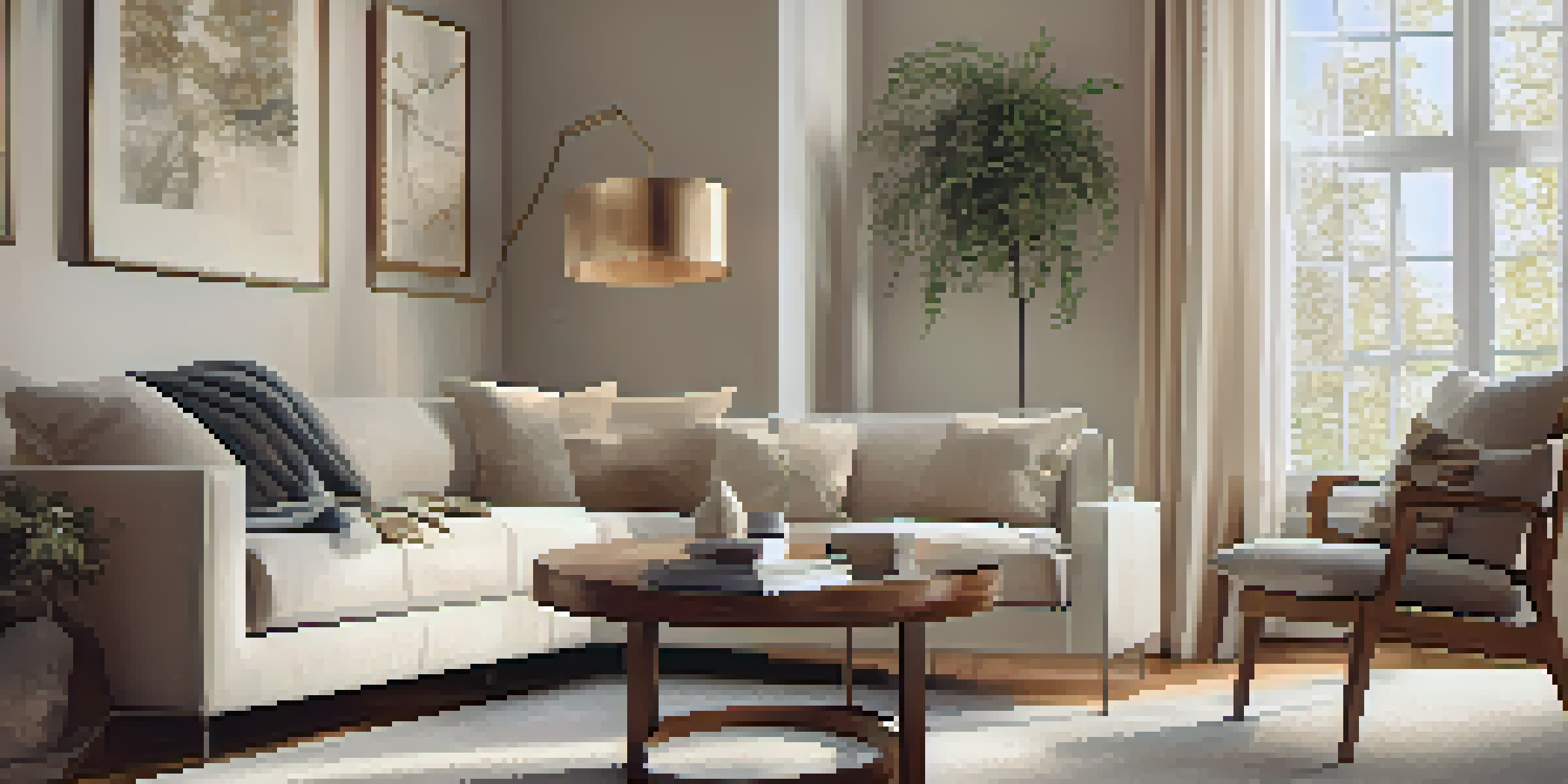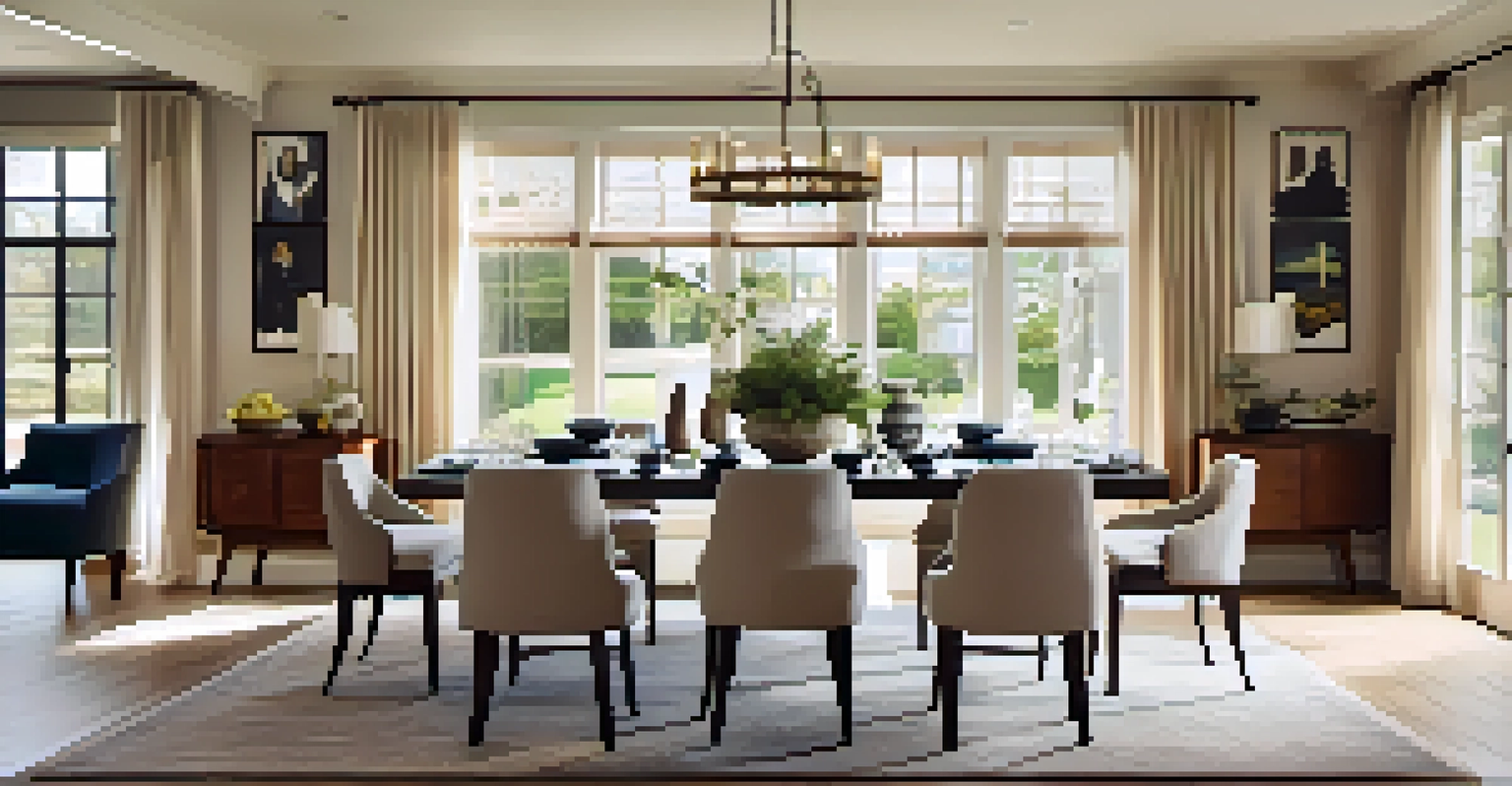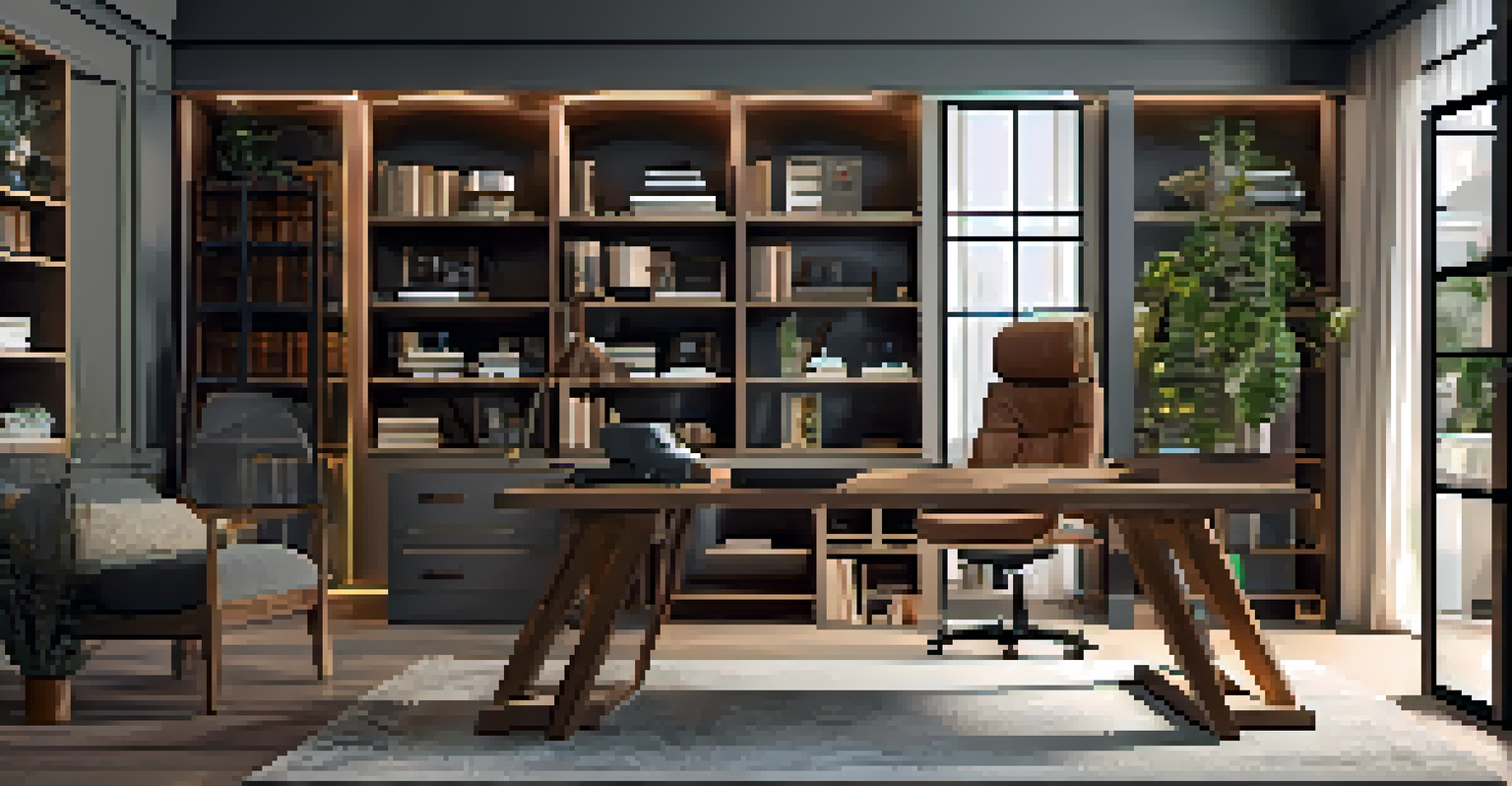Timeless Design Principles for a Cohesive Home Decor

Understanding the Basics of Timeless Design
Timeless design is all about creating spaces that feel comfortable and inviting while standing the test of time. It often incorporates classic elements that can be adapted to various personal styles, ensuring longevity. Think of it like a favorite book that you can read over and over again without it feeling outdated.
Simplicity is the ultimate sophistication.
The key to achieving a timeless look lies in balancing aesthetics and functionality. It’s essential to choose pieces that not only look good but also serve a purpose in your home. This way, you avoid clutter and make your living space more enjoyable and efficient.
Additionally, timeless design often emphasizes quality over quantity. Investing in fewer, high-quality pieces can elevate your decor, making your home feel more cohesive and thoughtfully curated.
Embracing Neutral Color Palettes
One fundamental principle of timeless design is the use of neutral colors. Shades like whites, beiges, and greys provide a serene backdrop that allows other decor elements to shine. Imagine these colors as a blank canvas, ready for you to add personal touches and vibrant accents.

Neutral palettes are versatile and work well in various lighting conditions, making them ideal for any room. They can also be easily updated with seasonal decorations or new trends, ensuring your space remains fresh without a complete overhaul.
Timeless Design Balances Style and Function
Timeless design blends aesthetics with functionality, ensuring your home is both beautiful and practical.
Moreover, neutral colors create a sense of cohesion throughout your home, tying different rooms together. This seamless flow can make your space feel larger and more connected, enhancing the overall ambiance.
Incorporating Balance and Symmetry
Balance and symmetry are crucial elements in achieving a cohesive home decor. When you arrange furniture and decor items symmetrically, it creates a sense of order and calm. Think of a well-balanced meal; just as it nourishes the body, balanced decor nourishes the eye.
Design is not just what it looks like and feels like. Design is how it works.
Using symmetry doesn’t mean every piece has to match perfectly. You can achieve a harmonious look by mirroring shapes and colors across a room. For example, if you have a large sofa on one side, balance it with a pair of chairs or an accent table on the other.
Incorporating balance helps guide the viewer’s eye throughout the space, making it feel more inviting. This principle can be applied in various ways, whether it's through artwork placement or the arrangement of accessories.
Mixing Textures for Visual Interest
Incorporating different textures is a fantastic way to add depth and interest to your decor. By combining materials like wood, metal, fabric, and glass, you create a dynamic environment that feels inviting and layered. Think of a well-prepared dish; the interplay of textures can enhance the overall experience.
Layering textures can also soften a space, making it feel less sterile and more lived-in. For instance, pairing a sleek leather sofa with a cozy knit throw or a plush rug can create a warm and welcoming atmosphere.
Neutral Colors Create Cohesion
Using neutral color palettes provides a serene backdrop that ties different rooms together, enhancing the overall ambiance.
When mixing textures, aim for balance and complementarity. Using contrasting textures can create a striking effect, while similar textures can unify a room, helping to maintain a cohesive look.
Focusing on Functional Furniture
Selecting functional furniture is essential for creating a cohesive home decor. Pieces that serve multiple purposes can maximize space and reduce clutter, making your home feel more organized. Imagine a coffee table that doubles as storage; it’s both stylish and practical.
When choosing furniture, consider how each piece will be used in your daily life. Opting for items that fit your lifestyle not only enhances functionality but also fosters a more inviting atmosphere.
Additionally, functional furniture often aligns with timeless design principles, as these pieces are typically well-crafted and built to last. This focus on quality ensures your investment continues to serve you well for years to come.
Adding Personal Touches and Accessories
While timeless design principles provide a solid foundation, personal touches are what truly make a space feel like home. Incorporating accessories like artwork, books, and family photos adds character and tells your unique story. Think of these items as the finishing touches on a beautifully wrapped gift.
When selecting accessories, aim for a mix of sizes and shapes to create visual interest. A large piece of art can anchor a room, while smaller items can be used to enhance shelves and tables. This layering effect not only enriches your decor but also showcases your personality.
Personal Touches Make Spaces Unique
Incorporating personal accessories adds character to your home, making it feel inviting and reflective of your unique story.
Remember to keep it cohesive by choosing accessories that complement your overall design scheme. This harmony allows your personal touches to shine without overwhelming the space.
Lighting: The Unsung Hero of Home Decor
Lighting plays a crucial role in setting the mood and enhancing the overall aesthetic of your home. Good lighting not only highlights your decor but also creates warmth and comfort. Think of it as the stage lighting that brings a performance to life—it can completely transform the atmosphere.
Incorporating a mix of ambient, task, and accent lighting is key to achieving a well-lit and inviting space. Ambient lighting provides overall illumination, while task lighting focuses on specific areas, like reading nooks. Accent lighting, such as decorative fixtures, adds character and flair.

Moreover, consider the use of natural light when planning your decor. Maximizing daylight through windows can make a space feel more open and airy, enhancing the cohesive feel of your home.